AAV Cell Culture: Principles and Applications Explained
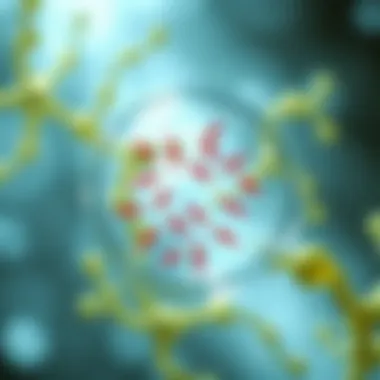
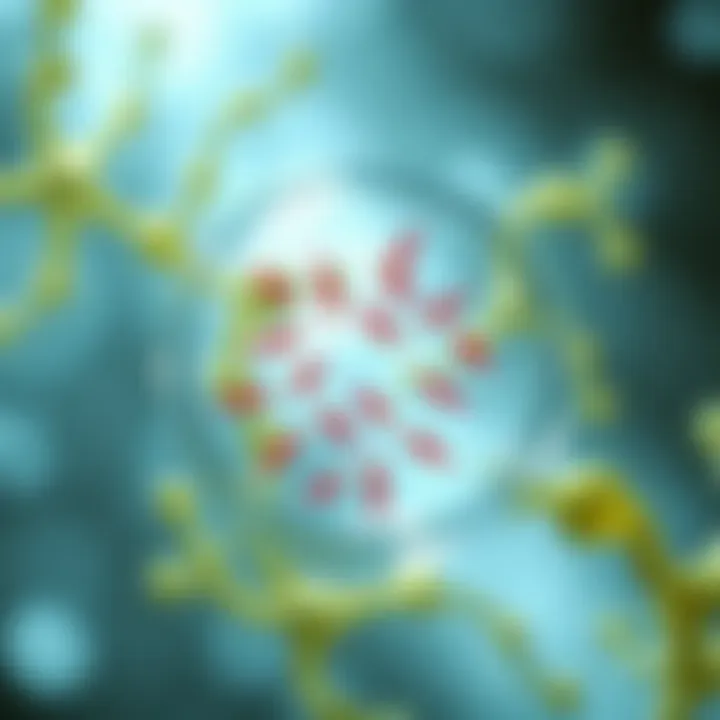
Intro
Adeno-associated viruses, commonly known as AAVs, are a fascinating aspect of gene therapy. Their growing influence in the scientific world can’t be overstated as they provide a potent tool for delivering genetic material across various systems. Their low pathogenicity—meaning they’re unlikely to cause disease—makes them particularly useful in clinical settings where safety is paramount. The implications stretch far, impacting areas like cellular biology, genetics, and therapeutic strategies.
In this article, we’ll peel back the layers of AAV cell culture, exploring the essential principles and diverse applications. We’ll journey through current research trends, recent studies, and exciting breakthroughs that are shaping the future of gene therapy.
Through understanding AAVs, researchers, educators, and students can better navigate the evolving landscape of genetic technologies. By the end, the aim is to present a clear picture of how AAVs work and their potential to advance medicine and scientific discovery.
Intro to AAV Cell Culture
In the ever-evolving field of gene therapy, understanding adeno-associated virus (AAV) cell culture is of paramount importance. These viruses have proven themselves as powerful tools for gene delivery, holding great promise for treating a variety of genetic disorders. Given their low pathogenicity and ability to integrate into the host genome, AAVs have become a focal point in both research and clinical applications.
Cell culture technology serves as the backbone for producing these viruses, enabling researchers to scale up production and conduct extensive studies on their efficacy and safety. One major benefit of mastering AAV cell culture lies in the ability to produce a consistent and high-quality vector for clinical applications. Researchers can explore diverse methods to enhance yield and optimize performance characteristics of AAV, ensuring that therapeutics designed to tackle genetic abnormalities are both effective and safe.
Moreover, considerations around AAV cell culture are diverse and complex. From selecting the right cell lines to ensuring the appropriate media conditions, each element plays a role in the overall success of AAV applications. As the scientific community continues to push the boundaries of what can be achieved with gene therapy, a solid grasp of AAV cell culture principles is crucial for future advancements.
"Understanding the nuances of AAV cell culture can open doors to breakthroughs in treatment options that were once thought to be unattainable."
"Understanding the nuances of AAV cell culture can open doors to breakthroughs in treatment options that were once thought to be unattainable."
With so much at stake, diving deep into the principles of AAVs and their cell culture techniques not only prepares researchers and professionals but also makes the challenges faced in clinical environments a little less daunting.
Biological Basics of AAV
Understanding the biological fundamentals of adeno-associated viruses (AAV) is crucial for comprehending their utility in gene therapy. The specifics of AAV not only illuminate its mechanisms but also inform its applications across various fields. The AAV is a member of the Parvoviridae family, and despite its unassuming nature, it has become a heavyweight in the realm of virology and genetic engineering. Its ability to transfer genetic material with minimal immune response is key in therapeutic contexts. Here, we delve into the structural aspects of AAV and its replication cycle, thereby laying a foundational understanding for those eager to navigate the complexities of AAV cell culture.
Structure of AAV
AAV is a small virus with a diameter ranging from approximately 20 to 25 nanometers. It possesses a single-stranded DNA genome, encapsulated within a robust protein shell called the capsid.
- Capsid Composition: The capsid comprises 60 protein subunits, known as VP1, VP2, and VP3. The variation in these proteins contributes to the distinct serotypes of AAV, affecting their tissue specificity and transduction efficiency.
- Genomic Features: The genome itself, while compact, carries essential genes responsible for viral replication and encapsidation. Notably, AAV does not contain genes that cause disease, which underpins its classification as a non-pathogenic vector.
A visualization of AAV structure reveals a secvondary structure that is intricately folded, allowing it to shield its genome effectively. Not only does this structural integrity aid in stability, it ensures that the viral materials are delivered efficiently to target cells when utilized in therapies.
Replication Cycle
The replication cycle of AAV is a complex sequence of events that allows the virus to hijack host cellular machinery for its propagation.
- Infection Initiation: Initially, the AAV attaches to the target cell via specialized receptors on the cellular membrane. (e.g., heparan sulfate proteoglycans).
- Entry Mechanism: Following attachment, the virus is internalized through endocytosis and then transported to the nucleus of the host cell.
- Genome Release: Once inside, the AAV genome is released into the nucleus where it can exist in two states:
- Replication Phase: Subsequent replication occurs upon host cell division, leading to the synthesis of new viral particles.
- Assembly and Release: Eventually, these particles are assembled and released from the cell, ready to infect new targets.
- Integrated State: AAV can integrate its genome into the host’s chromosome, rendering it a stable presence that can be inherited by daughter cells.
- Episomal State: Alternatively, the AAV genome can remain as an independent episome, allowing for transient expression without permanent alteration of the host genome.
The intricacies of the AAV replication cycle reveal why geneticists favor it as a delivery vehicle.
The reliability of AAV in targeting and transducing cells defines its role in cutting-edge therapies.
The reliability of AAV in targeting and transducing cells defines its role in cutting-edge therapies.
In sum, grasping the structure and replication cycle of AAV serves not only to enhance theoretical knowledge but also acts as a springboard for practical applications in cell culture methodologies. Consequently, these foundational aspects set the stage for deeper discussions on methodologies for AAV production and purification in subsequent sections.
Cell Culture Techniques for AAV Production
Cell culture techniques are the foundation on which the entire AAV production framework stands. The methods employed to cultivate cells are crucial for optimizing the yield and efficiency of adeno-associated virus production. These techniques ensure that cells are not only maintained in optimal conditions but also engineered to allow for effective viral replication. Hence, understanding these methods is vital for researchers and practitioners in the field.
Selection of Cell Lines
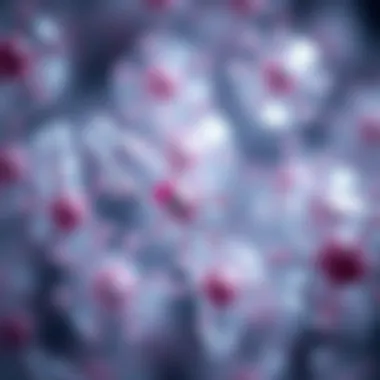
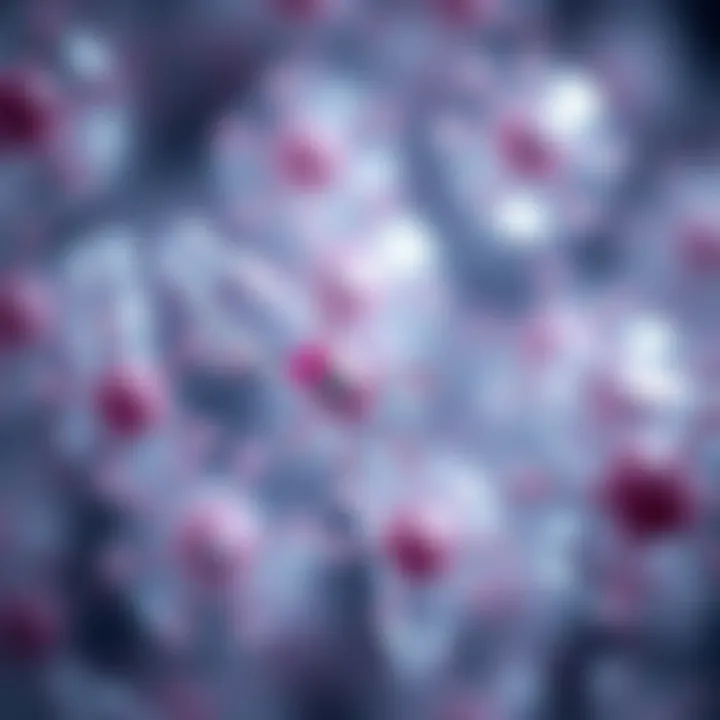
The choice of cell lines directly influences the feasibility and stability of the AAV production process. Researchers often favor different cell lines, such as HEK293 cells or Huh7 cells, based on their specific research aims and regulatory requirements.
- HEK293 Cells: These human embryonic kidney cells are popular because of their high transfection efficiency and ability to support AAV replication. HEK293 cells, particularly when modified, provide a conducive environment for AAVs, thanks to their ability to synthesize the necessary helper proteins required during the viral assembly phase.
- Huh7 Cells: This hepatocyte cell line can be valuable in the context of studying liver-targeted AAV vectors. Their relevance stems from their natural biology, closely mimicking human liver cells, thus making them beneficial for in vivo studies.
Care must be taken while selecting a cell line, as factors such as growth characteristics, resilience to viral infection, and even ethical considerations come into play. Failing to choose the appropriate cell line can lead to subpar yields or compromised virus quality.
Growth Media and Conditions
Setting up the appropriate growth media and conditions is like laying a solid foundation for a building. Without this, all efforts could come crumbling down. The media, typically rich in nutrients and often supplemented with serum, must provide the right balance of amino acids, vitamins, and salts to enable robust cell proliferation.
- Basal Media: Common choices include DMEM (Dulbecco's Modified Eagle Medium) or RPMI 1640. These are formulated to support eukaryotic cell growth.
- Serum Supplements: Adding fetal bovine serum (FBS) greatly boosts growth rates and cell viability. However, the source of the serum must be considered due to potential variability in batch quality.
- Incubation Conditions: Cells are usually maintained at 37°C in a humidified atmosphere with 5% CO2. Consistency in temperature and gas exchange is crucial; even minor fluctuations can disrupt cellular homeostasis and affect AAV production efficiency.
Transfection Methods
Transfection is pivotal in the AAV production process, as it facilitates the introduction of the viral genome into the chosen cell line. Different methods can be employed, with each having its own advantages and limitations.
- Calcium Phosphate Transfection: This method involves the formation of precipitates that enhance the uptake of DNA by the cells. Although it is straightforward, the efficiency can vary depending on cell type.
- Lipofection: Using lipid-based reagents, researchers can encapsulate DNA, increasing its uptake into cells. This method is generally more efficient than calcium phosphate but may come with higher costs.
- Electroporation: This technique uses electrical fields to create temporary pores in cell membranes, allowing DNA to enter. Though often used in research, it might not be as scalable for large productions.
"The proper transfection method can significantly affect the yield and quality of the AAV produced. Finding the right balance between efficiency, cost, and reproducibility is essential for successful outcomes."
"The proper transfection method can significantly affect the yield and quality of the AAV produced. Finding the right balance between efficiency, cost, and reproducibility is essential for successful outcomes."
Ultimately, mastering these cell culture techniques is key to enhancing the efficiency of AAV production, thereby enabling innovative research and therapeutic advancements. Interested individuals can delve deeper by exploring resources such as Wikipedia or ResearchGate, which offer a wealth of reviews and studies on this topic.
Characterization of AAV Vectors
Characterizing AAV vectors is a critical aspect in the realm of gene therapy and biotechnology. This process involves a thorough understanding of the various properties of AAV, particularly when it comes to their ability to deliver therapeutic genes effectively. Focusing on this topic not only enhances our knowledge of AAV systems but also brings to light factors that can influence their efficiency and safety. Below, we delve into two main components necessary for the characterization process: purification processes and titer determination.
Purification Processes
Purification of AAV vectors is fundamental in ensuring the integrity and functionality of the viral particles. The success of gene therapy largely hinges on delivering purified and concentrated viral vectors that are free from contaminants. Unwanted materials or cellular debris can compromise the effectiveness of the AAVs, leading to reduced efficacy in targeted cells or even potential immune responses that thwart treatment progress.
Several techniques are commonly employed for the purification of AAVs, including:
- Ultracentrifugation: This method utilizes high-speed spinning to separate particles based on density, allowing for the isolation of AAV vectors effectively. However, it may require several rounds to achieve high purity levels.
- Chromatography: Various forms such as affinity chromatography or ion-exchange chromatography provide a means of isolating AAV vectors, thanks to their distinct surface properties. This method is popular for maintaining the integrity of the virus.
- Precipitation: Commonly used in conjunction with other techniques, this method aids in concentrating the AAVs by precipitating them from cell lysates or culture media.
Choosing the right purification strategy can influence both the yield and quality of AAV vectors, prompting researchers to tailor methods according to their specific applications. For instance, researchers may opt for a more rigorous purification process if the end goal is to use the AAVs in clinical trials.
"A well-purified AAV vector is crucial for effective gene therapy, as impurities can lead to suboptimal outcomes."
"A well-purified AAV vector is crucial for effective gene therapy, as impurities can lead to suboptimal outcomes."
Titer Determination
Titer determination is another pivotal part of the characterization of AAV vectors. It refers to the quantification of viral particles, which is essential for evaluating the potential effectiveness of gene delivery. Having an accurate measurement ensures that the correct dosage can be administered in experimental or clinical settings.
Quantification methods may vary but commonly involve:
- qPCR (quantitative Polymerase Chain Reaction): This molecular technique measures the number of AAV genomes present in a sample, which provides a reliable quantification of viral particles. However, it does not reflect functional viral particles since it considers genetic material rather than infectious units.
- ELISA (Enzyme-Linked Immunosorbent Assay): This immunological technique quantifies AAV capsid proteins, offering insight into the total number of viral particles present, mixing both functional and non-functional units together.
- Plaque Assays: This traditional method involves infecting cells with diluted samples and counting the resulting plaques. While time-consuming, plaque assays allow researchers to determine the number of actively infectious AAV particles.
An awareness of titer determination methods empowers scientists to make informed decisions regarding the administration of viral vectors, ultimately impacting the success of gene therapy initiatives. Whether it's for research purposes or clinical applications, obtaining precise titer measurements is indispensable for effective outcomes.
Applications of AAV in Research
The importance of AAV applications in research cannot be overstated. As gene therapy continues to evolve, the versatility and effectiveness of adeno-associated viruses (AAV) have positioned them as essential tools in various studies, offering innovative pathways for understanding and treating genetic disorders. The role of AAV extends beyond mere viral delivery systems; it shaped the very foundation of how we view gene therapy today.
Gene Therapy Advancements
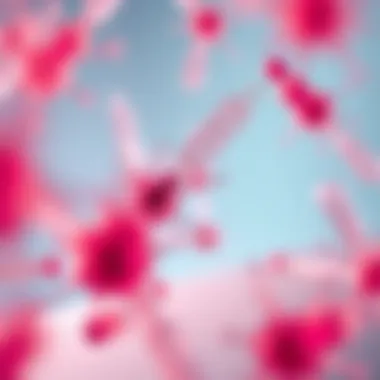
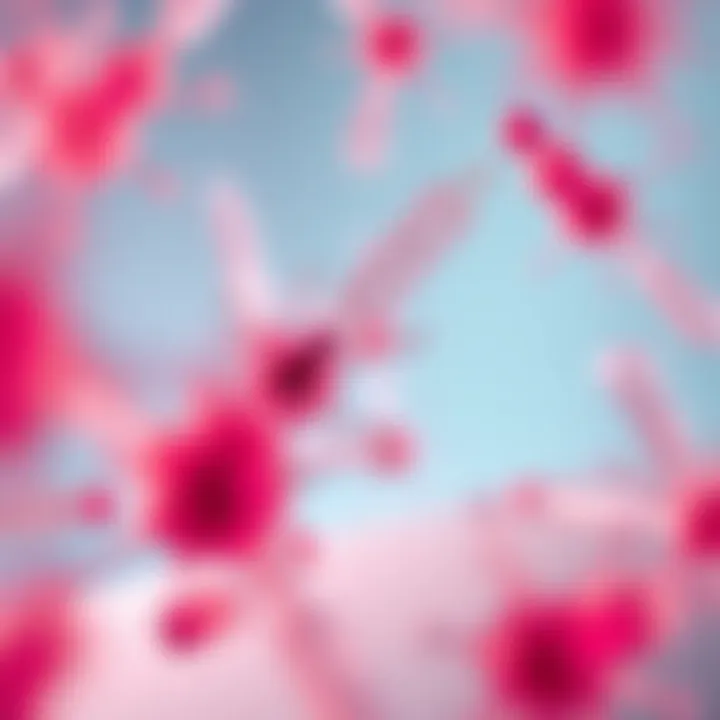
AAV plays a pivotal role in advancing gene therapy by facilitating safe and efficient gene delivery. The innate properties of AAV allow it to enter host cells without inducing significant immune responses, making it a promising candidate for long-term therapeutic effects. This characteristic is especially important when considering the treatment of chronic conditions like cystic fibrosis, hemophilia, and muscular dystrophy.
The development of engineered AAV vectors has further enhanced their suitability in therapies. There are various serotypes of AAV that can preferentially target specific tissues and cell types. This has led to remarkable advancements in targeting strategies, which in turn improves the efficacy of gene therapies. For instance, AAV9 can effectively cross the blood-brain barrier, which is crucial for treating neurological diseases.
Moreover, recent trials showcasing the efficacy of AAV-based therapies have given researchers a reason to be optimistic. For example, the FDA's approval of AAV-mediated therapies for certain inherited retinal diseases has paved the way for broader acceptance and exploration of AAV in clinical settings.
"The adaptability of AAV in gene therapy applications serves as a beacon of hope for many genetic disorders previously deemed untreatable."
"The adaptability of AAV in gene therapy applications serves as a beacon of hope for many genetic disorders previously deemed untreatable."
Modulation of Gene Expression
Another significant application of AAV is its utility in the modulation of gene expression. Unlike traditional approaches, AAV vectors can be designed to deliver not just the therapeutic gene but also regulatory elements that control gene expression levels. This capability enables precise regulation of gene activity, which is crucial in scenarios where over- or under-expression of a gene can lead to detrimental effects.
For instance, AAV can be employed to deliver short hairpin RNAs (shRNAs) that silence specific genes implicated in diseases. This method allows for targeted interventions and has shown promise in various cancer therapies, where the inhibition of oncogenes via AAV-delivered shRNAs can suppress tumor growth.
Additionally, research on AAV's role in creating inducible expression systems is an exciting area. By incorporating regulatory triggers, researchers can fine-tune when and where a gene is expressed. This is especially relevant in fields such as developmental biology and personalized medicine, where precise control over gene expression is critical.
The versatility of AAV in these applications emphasizes its importance in modern research environments, leading to richer datasets and informing the design of future studies. The ongoing work in the field of AAV research serves as a reminder that we stand on the brink of remarkable discoveries, likely to reshape therapies and underlying biological understandings.
In summary, the applications of AAV in research highlight a profound shift in therapeutic approaches, opening new doors for exploration in gene delivery and expression modulation. As advancements continue, the impact of AAV will likely grow, defining how we think about genetic therapies long into the future.
Clinical Applications of AAV
The clinical applications of AAV (Adeno-Associated Virus) are nothing short of groundbreaking, especially in the field of gene therapy. As researchers continue to peel back the layers of AAV's capabilities, a clearer picture emerges of its therapeutic potential. The focus here will be on the importance of AAV in clinical settings, its current therapy landscape, as well as the challenges that persist in translating these advances into widespread clinical use.
Current Therapies and Approvals
The real magic of AAV lies in its ability to deliver therapeutic genes with high precision and low immunogenicity. One of the pivotal moments in AAV's journey was the approval of therapies such as Luxturna, which targets Leber congenital amaurosis, a rare genetic disorder that leads to blindness. Luxturna's approval by the U.S. Food and Drug Administration in 2017 marked a significant milestone. Patients receiving this treatment have shown remarkable improvement in vision, thereby underscoring the tangible benefits of AAV in real-world scenarios.
Moreover, Zolgensma has been another notable application. Approved for spinal muscular atrophy, it utilizes AAV technology to deliver a copy of the SMN1 gene, proving to be a lifeline for many young patients. Each case where AAV therapies have implemented successfully strengthens the argument for wider adoption in clinical practice.
However, it’s essential to bear in mind that the journey of AAV in the realm of clinical therapies doesn't stop at approval. Post-marketing surveillance has revealed that some patients may experience unforeseen reactions, which leads to ongoing discussions among clinicians about long-term trials and risk-benefit analyses of AAV-based therapies.
The following are current AAV therapies that have received regulatory approval:
- Luxturna (RPE65 mutation)
- Zolgensma (SMA)
- AAV-CNGB3 (Achromatopsia)
"AAVs open up a world of possibilities, transforming what was once considered fantasy in medical treatments into a reality."
"AAVs open up a world of possibilities, transforming what was once considered fantasy in medical treatments into a reality."
Challenges in Clinical Translation
Despite these promising therapies, challenges remain that hinder the full potential of AAV in clinical settings. One significant hurdle is the issue of immunogenic responses. While AAVs are generally regarded as non-infectious and low in pathogenicity, patients may develop antibodies against the viral capsid. This development could potentially limit the efficacy of subsequent infusions, rendering the therapy less effective or even ineffective.
Furthermore, the challenge of gene delivery persists. It has been observed that AAVs can only accommodate a limited amount of genetic material—typically around 4.7 kilobases. For certain diseases that require larger gene constructs, this can pose a significant limitation, complicating the design of gene therapies tailored for diverse conditions.
Another area of concern is the manufacturing processes. Producing AAV vectors at scale while ensuring safety, consistency, and efficacy can significantly delay therapies reaching the market. Facilities must adhere to stringent Good Manufacturing Practice (GMP) regulations, which can be resource-intensive.
Ethical Considerations in AAV Research
The exploration of Adeno-associated viruses (AAV) and their applications, particularly in gene therapy, brings along a myriad of ethical considerations. This aspect of research remains pivotal, as it directly impacts not only the scientific community but also society at large. The ethical discourse surrounding AAV research primarily concerns safety and the ever-evolving regulatory landscape. Understanding these nuances ensures that advancements in AAV technology do not come at an unjust risk.
Safety Concerns
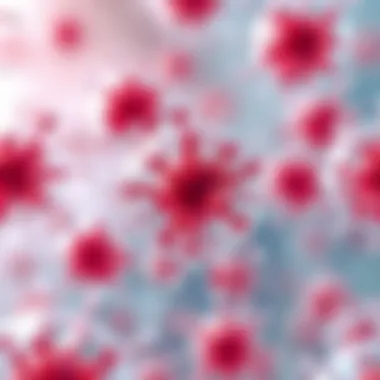
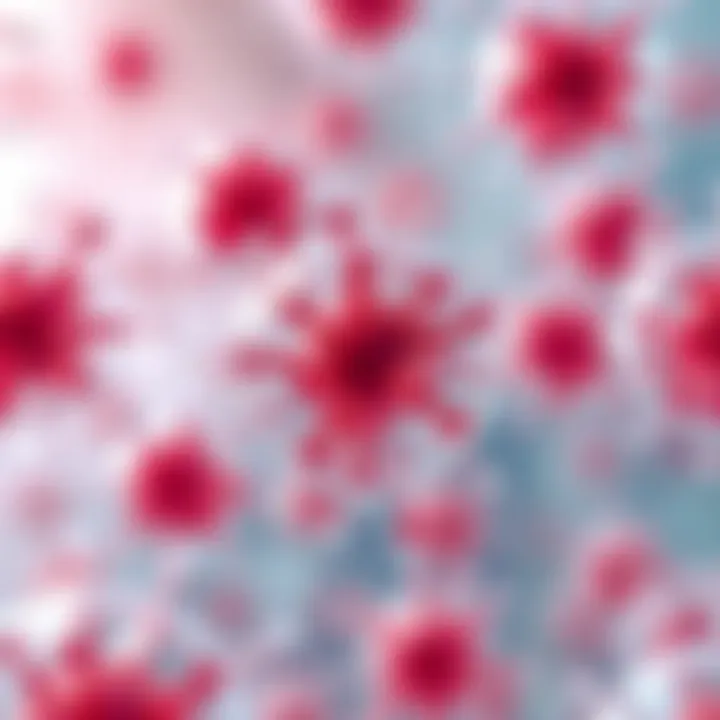
When it comes to AAV applications, the safety of such therapies is paramount. AAVs have gained favor due to their generally non-pathogenic nature. However, there are still important safety issues that need addressing. One major concern is the potential for immune reactions in patients receiving gene therapy. Adverse immune responses to AAV vectors can lead to inflammation and other complications, which could undermine the success of treatments and even pose health risks.
Furthermore, one should consider the long-term effects of AAV integration into the genome. Although integration events are rare, they can occur and might lead to unexpected mutations or oncogenic consequences. Thus, researchers are accountable for conducting thorough preclinical evaluations to ensure that the benefits of AAV therapies clearly outweigh any associated risks. The ongoing monitoring of patients in clinical trials provides an essential layer of safety, allowing for adjustments and interventions should any adverse effects emerge.
Regulatory Landscape
The path for any new medical application, including those involving AAV, is paved with regulations designed to protect patients and uphold scientific integrity. The regulatory landscape for AAV research is complex and varies across different countries. In the United States, the Food and Drug Administration (FDA) plays a crucial role in overseeing gene therapies, ensuring that they are safe and effective before they reach the market.
A legal framework sets forth guidelines for clinical trials, commercialization, and post-marketing surveillance. For instance, AAV developers must provide extensive data on safety and efficacy, implement risk management strategies, and adhere to ethical trial practices involving informed consent from participants.
Across Europe, similar regulatory bodies, like the European Medicines Agency (EMA), enforce rigorous standards, reflecting a global trend towards ensuring that innovative therapies are safe for clinical use. Researchers must remain cognizant of these intricacies and contribute actively to discussions that shape regulatory policies to foster a balance between innovation and safety.
"The ethical implications of AAV research and therapy extend beyond compliance; they delve into ensuring trust between the scientific community and society. Proper adherence to ethical standards can play a crucial role in the public acceptance and eventual integration of AAV therapies into the healthcare fabric."
"The ethical implications of AAV research and therapy extend beyond compliance; they delve into ensuring trust between the scientific community and society. Proper adherence to ethical standards can play a crucial role in the public acceptance and eventual integration of AAV therapies into the healthcare fabric."
Future Directions in AAV Cell Culture
As the landscape of molecular biology and gene therapy continuously evolves, the future of AAV cell culture stands as a hallmark of potential breakthroughs. This section aims to illuminate the significance of this topic, tied closely to emerging trends in technology, research advancements, and therapeutic prospects.
Technological Innovations
In the field of AAV cell culture, technology is not just an auxiliary tool; it's a cornerstone for innovation. One of the promising aspects is the rise of automated cell culture systems. These systems can monitor conditions in real-time, ensuring that optimal environments are maintained. Automation minimizes human error, and it can significantly ramp up the scalability of AAV production. For example, the use of bioreactors with integrated sensors has become more common. These devices can dynamically adjust parameters like temperature and pH, leading to higher yields of AAV particles, which is crucial for clinical applications.
Additionally, advancements in CRISPR technology are changing the game entirely. Scientists can now fine-tune the genetic modifications made to host cells to enhance the efficiency of AAV production. The ability to edit the genome opens avenues to create customized cell lines tailored for specific AAV applications, ensuring that researchers can achieve greater consistency and potency in their products.
Key Technological Innovations:
- Automated cell culture systems
- Advanced bioreactor designs
- CRISPR/Cas9 gene editing technology
"The future of AAV culture is not just about producing more; it’s about producing smarter."
"The future of AAV culture is not just about producing more; it’s about producing smarter."
Expanding Research Horizons
As the parameters of AAV research broaden, the implications of these expansions are profound. One notable direction is the exploration of AAV in novel therapeutic applications. Given its versatility, researchers are investigating its potential in areas like neurodegenerative diseases and personalized medicine. The ability to tailor AAV serotypes for specific tissues will enhance the delivery mechanisms significantly, making treatments more effective.
Importantly, interdisciplinary collaborations are fostering groundbreaking research. When geneticists work hand-in-hand with bioengineers, new methodologies emerge that may drastically reduce the costs and time associated with AAV research and therapy development. Furthermore, the growing interest in RNA viruses and their behavior during viral infections has sparked curiosity about the role of AAVs in combined vector strategies, creating a fertile ground for innovative cross-study approaches.
Expanding Areas of Research:
- Targeted delivery systems for gene therapy
- AAV's role in the treatment of neurodegenerative diseases
- Integration of AAV systems with RNA virus studies
In summary, the future directions in AAV cell culture are not merely a continuation of current practices but a significant leap towards redefining how gene therapies are developed and employed. By embracing technological innovations and expanding research horizons, the scientific community can pave a path forward that promises enhanced treatment options and broader accessibility.
Closure
The conclusion at this juncture of the article wraps up critical insights into AAV cell culture, showcasing its profound relevance in contemporary biomedical research and clinical applications. Understanding this topic is not merely an academic exercise; it has significant implications for advancing gene therapy techniques and innovative treatments for various genetic disorders.
Summary of Key Points
In reviewing the key insights presented, several vital points emerge:
- AAV vector safety and low pathogenicity make them a favorable choice for gene delivery.
- Cell culture techniques are essential for producing high-quality AAV vectors, which includes selection of appropriate cell lines, optimizing growth conditions, and employing effective transfection methods.
- Characterization, including purification and titer determination, is crucial to assess the success of AAV preparations, impacting their eventual application.
- The role of AAV in both research settings and clinical therapies highlights its versatility, while ongoing ethical considerations remain paramount in ensuring responsible advancements.
- Future directions signal exciting potential, with emerging technologies poised to revolutionize current methodologies and expand the horizons of AAV applications.
The Path Ahead
Looking ahead, the journey of AAV cell culture research is brimming with prospects that warrant keen attention. Here are some avenues worth exploring:
- Technological Innovations: Cutting-edge techniques such as CRISPR could integrate seamlessly with AAV vectors, potentially enhancing gene editing capabilities.
- Personalized Medicine: As the landscape shifts toward precision medicine, AAV's adaptability could allow tailored therapies that account for individual genetic profiles.
- Global Collaborations: Shared knowledge and resources among institutions can foster breakthroughs that were previously thought unattainable.
- Regulatory Frameworks: As research accelerates, nuanced regulatory approaches will be integral to navigate the complexities inherent in genetic therapies.
The importance of AAV cell culture cannot be overstated. It stands as a cornerstone in the pursuit of novel therapeutic interventions that can transform lives afflicted by genetic conditions. As we move forward, continuous evaluation of methodologies, ethical considerations, and technological advancements will guide this evolving field toward ever-greater horizons.







